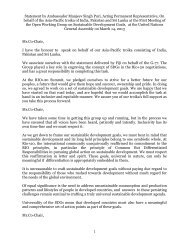STATE OF THE WORLD'S CITIES 2012/2013 Prosperity
STATE OF THE WORLD'S CITIES 2012/2013 Prosperity
STATE OF THE WORLD'S CITIES 2012/2013 Prosperity
Create successful ePaper yourself
Turn your PDF publications into a flip-book with our unique Google optimized e-Paper software.
State of the World’s Cities <strong>2012</strong>/<strong>2013</strong><br />
connectivity and spatially integrates the networks of cities<br />
that make up the urban/regional configuration. The large<br />
economically prosperous cities of Shanghai, Guangzhou<br />
and Beijing have invested<br />
in infrastructure to connect<br />
peripheral towns and<br />
POLICy enhance the large urban<br />
configuration. Beijing has<br />
extended 304 km of roads<br />
to link all ‘administrative<br />
villages’ to the city (2005).<br />
Shanghai has built 750 km<br />
of highways to integrate<br />
the rural hinterland (2007).<br />
Investments<br />
in transport<br />
infrastructure and related<br />
reforms, including finance<br />
and regulations, deliver<br />
major economic benefits,<br />
contributing to poverty<br />
alleviation and improving<br />
quality of life.<br />
POLICy<br />
Cities and regional governments should encourage<br />
social and institutional innovations that can level out<br />
socio-spatial inequalities; this can include tax revenue transfers<br />
among urban authorities within the large urban configuration, or<br />
revenue-sharing, or equalization grants.<br />
POLICy<br />
New or strengthened, more effective local and regional<br />
institutions, new linkages and alliances across the<br />
three tiers of government, together with a comprehensive vision<br />
with clear plans favouring inclusiveness, are all crucial for<br />
equitable development and prosperity.<br />
32<br />
China: high-speed train in Lujiazui City, the financial district of<br />
Shanghai. Bullet trains in China substantially reduce transit times<br />
between cities, a 140 km journey taking only 30 minutes.<br />
© ArtisticPhoto/Shutterstock.com<br />
Guangzhou has completed extensive networks of roads,<br />
electricity and water distribution to all neighbouring rural<br />
settlements with more than 100 residents (2007). 15<br />
Equity and social inclusion: The market-driven<br />
logic of scale economies can interfere with equitable<br />
distribution, such as unregulated land markets, spatial<br />
segregation, extreme income inequalities and uneven<br />
development. Speculative real estate development in<br />
many of these large urban<br />
configurations effectively<br />
excludes not only the poor,<br />
but even the middle class, POLICy from formal land markets,<br />
creating an uneven<br />
patchwork of privilege and<br />
underprivilege across large<br />
urban areas.<br />
Quality of life: When<br />
city leaders cooperate,<br />
rather than compete, in a<br />
number of areas (crime,<br />
poverty, social inequalities,<br />
Increasing<br />
evidence<br />
shows that<br />
interventions to<br />
promote quality<br />
of life have clear<br />
positive effects on<br />
the other dimensions<br />
of prosperity.<br />
Unsurprisingly, progress<br />
on the other dimensions<br />
of prosperity is found to<br />
enhance quality of life.


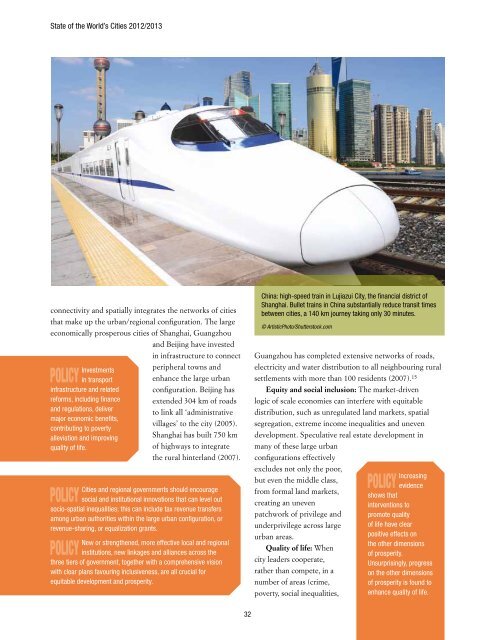

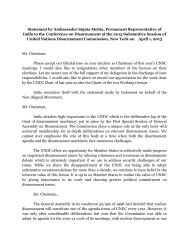
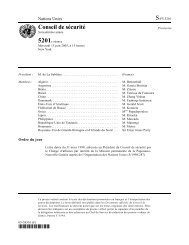
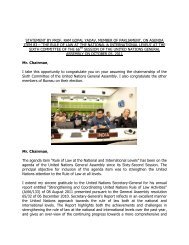
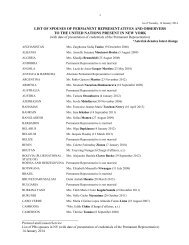
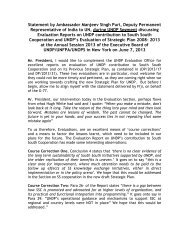
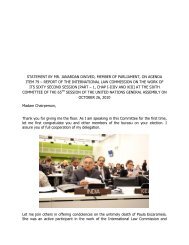
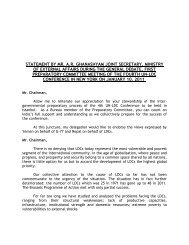
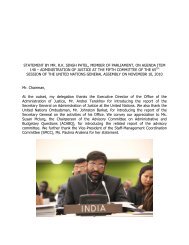

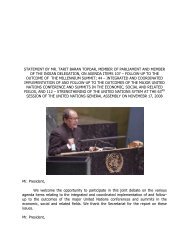
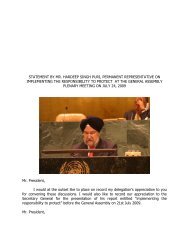
![1 statement by dr.[mrs] kakoli ghosh dastidar - Member States Portal](https://img.yumpu.com/27526598/1/190x245/1-statement-by-drmrs-kakoli-ghosh-dastidar-member-states-portal.jpg?quality=85)
